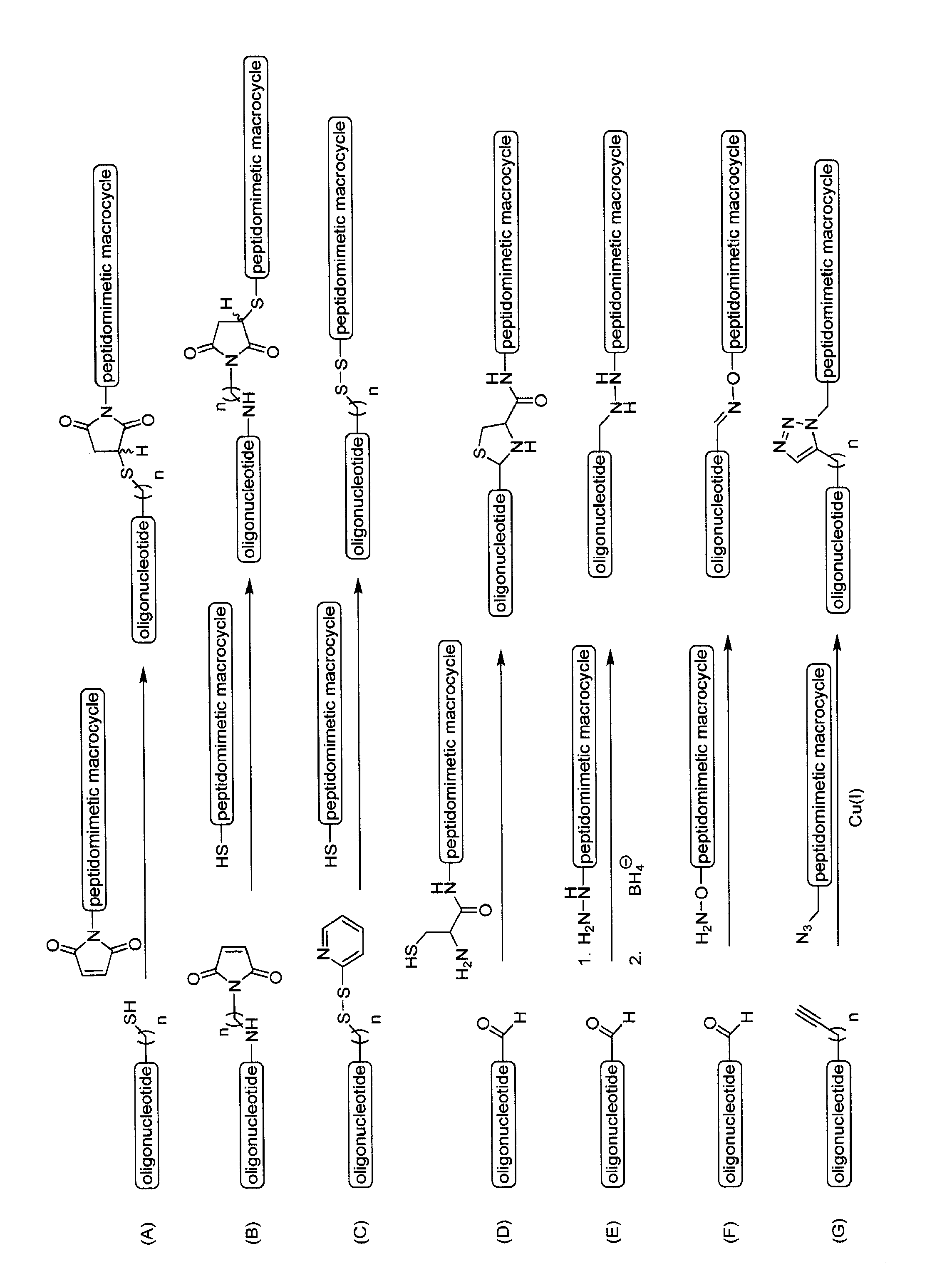Compositions and methods for enhancing cellular transport of biomolecules
a biomolecule and cellular transport technology, applied in the direction of peptides, tissue culture, dna/rna fragmentation, etc., can solve the problems of limited bioavailability of biomolecules such as polypeptides and nucleic acids, inability to achieve the balance of biological and physicochemical properties, and high-charged molecules such as nucleic acids experience special difficulty in passing across such membranes
- Summary
- Abstract
- Description
- Claims
- Application Information
AI Technical Summary
Problems solved by technology
Method used
Image
Examples
example 1
Preparation of siRNAs for Use in the Invention
[0224]A set of 21-nucleotide siRNA is designed to downregulate 1) the expression of a gene coding for a fluorescent EGFP protein and 2) the expression of HCV. The siRNA is chemically synthesized as 2′ bis(acetoxyethoxy)-methyl ether protected oligos by a commercial manufacturer (Dharmacon). Synthetic oligonucleotides are deprotected, annealed and purified according to the instructions provided by the manufacturer. Successful duplex formation is confirmed by polyacrylamide gel electrophoresis. The sequence of EGFP specific siRNA duplexes is designed following the manufacturer's recommendation and subjected to a BLAST search against the human genome sequence to ensure no genomic gene is targeted. The sequence of the HCV-specific siRNA duplexes is designed following the manufacturer's recommendation and subjected to a BLAST search against the human genome sequence to ensure no genomic gene is targeted. Duplex siRNAs with 5′Cy3 modification ...
example 2
Conjugation of siRNA to Peptidomimetic Macrocycle
[0225]A set of modified siRNAs (EGFP and HCV) is prepared according to Example 1 containing 3′-amino groups attached to a linker by annealing deprotected 3′-amino modified (Glen Research) single stranded siRNA with its complementary strand sequence. Duplex modified siRNA is then incubated with an excess of a crosslinker such as a sulfosuccinimidyl 4-[p-maleimidophenyl] butyrate crosslinkers (Sulfo-SMPB, PIERCE) in a reaction buffer. After reaction, the mixtures are desalted and the duplex siRNAs are extracted according to manufacturer instructions. The desalted fractions containing malemide-activated siRNA with crosslinker are pooled and incubated with equal molar ratio of a BID-SABH3A peptidomimetic macrocycle analog that contains one reactive cysteine (see U.S. patent application Ser. No. 10 / 981,873, filed on Nov. 5, 2004). The resulting conjugate is purified by a method such as HPLC or used as is.
example 3
Transfection of Cells
[0226]The conjugate resulting from Example 2 is used to transfect cells grown in culture. HeLa cells are grown to 70% confluence on tissue culture plates. The cells are washed and replaced with serum-free medium, and the conjugate is added at appropriate dilutions. The cells are incubated for various periods of time ranging from 1 to 6 hours and are then washed with medium and collected by incubation with trypsin. Total DNA and RNA is isolated via a Qiagen RNA / DNA minikit, and the isolated nucleic acid sequences are prepared for fluorescence uptake analysis in a fluorimeter.
[0227]This experiment may also be performed in a similar methods on HeLa cells grown on microscopy slides. Following incubation with the conjugates of the invention, the cells are washed and prepared for uptake studies by confocal microscopy.
[0228]Suitable controls for this experiment are, for example, siRNA sequences alone at various concentration or siRNA sequences in combination with a com...
PUM
| Property | Measurement | Unit |
|---|---|---|
| Permeability | aaaaa | aaaaa |
| Covalent bond | aaaaa | aaaaa |
Abstract
Description
Claims
Application Information
 Login to View More
Login to View More - R&D
- Intellectual Property
- Life Sciences
- Materials
- Tech Scout
- Unparalleled Data Quality
- Higher Quality Content
- 60% Fewer Hallucinations
Browse by: Latest US Patents, China's latest patents, Technical Efficacy Thesaurus, Application Domain, Technology Topic, Popular Technical Reports.
© 2025 PatSnap. All rights reserved.Legal|Privacy policy|Modern Slavery Act Transparency Statement|Sitemap|About US| Contact US: help@patsnap.com



